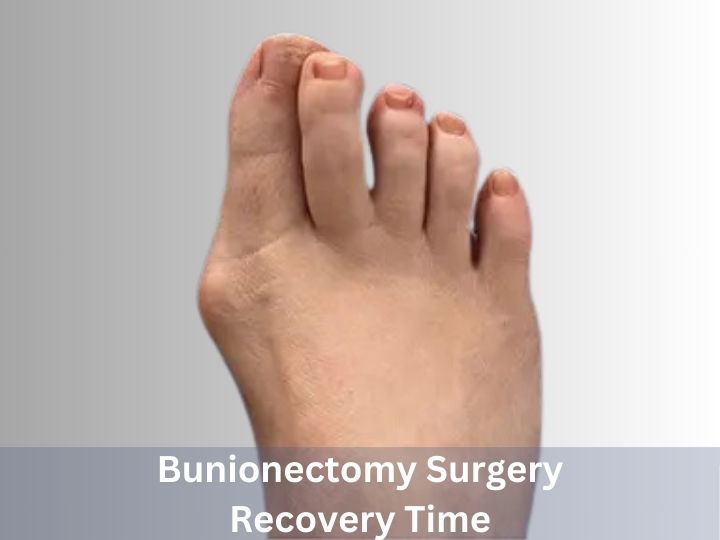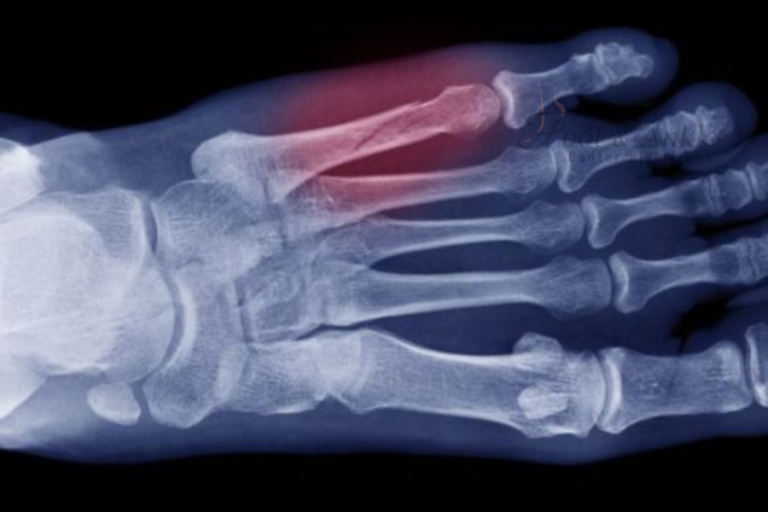Bunions, or hallux valgus, are very common foot deformities that include lateral deviation of the big toe. The condition may cause considerable discomfort and pain, which often needs surgical intervention; such surgeries are usually referred to as bunionectomy. While these surgeries may be effective in relieving symptoms and restoring alignment to the foot, knowing what to expect during recovery is important for the patient. This article provides an in-depth look at bunionectomy surgery recovery time, factors influencing recovery, and tips for a successful healing journey.
What is Bunionectomy Surgery?
A bunionectomy refers to any procedure wherein the surgeon corrects the bunion by repositioning the bones of the big toe and removing the bony prominence. There are a lot of ways to do bunionectomy, including the following:
Osteotomy: The big toe bones are surgically cut and realigned.
Exostectomy: It is the removal of the bony bump without realignment of the bones.
Arthrodesis: This procedure involves the fusion of bones in the joint in extreme cases.
The line of treatment would vary in relation to the extent of the bunion and one’s general health.
Recovery Timeline Overview
Recovery from bunionectomy surgery can be broken down into distinct phases, each with its own timeline and set of expectations.
1. Immediate Post-Operative Phase (Days 0-2)
The initial days after surgery are critical for pain management and the prevention of complications. The patient will experience swelling and discomfort during this phase. Important points to note include:
- Pain Management: Pain generally is managed by prescription medication. The patient should take pain medications as instructed to maintain a tolerable level of pain.
- Rest and Elevation: The elevation of the foot helps in reducing the swelling. The patients are advised to rest as much as possible during this period.
- Wound Care: The surgical site should be kept clean and dry. Follow your surgeon’s instructions regarding dressing changes.
2. Early Recovery Phase (Weeks 1-2)
Improvement of some pains, while some swelling, may be experienced by patients during the first two weeks following surgery.
- Follow-up: A follow-up visit with the surgeon is usually done within one to two weeks after the surgery to check up on the healing and removal of stitches if needed.
- Limited Weight Bearing: Most of the patients are made not to bear weight on the affected foot for a period of at least two weeks. Crutches or walkers may be prescribed to assist in walking.
- Introduction to Physical Therapy Gentle range-of-motion exercises can be introduced at this phase of recovery if the surgeon allows.
3. Intermediate Recovery Phase (Weeks 3-6)
As healing takes place, patients will resume to more active states progressively.
- Many are weight-bearing by the third or fourth week of rehabilitation, actively using a special postoperative shoe designed to protect the region of surgery while allowing mobilization.
- Physical Therapy: Exercises for patients usually start at this period, and physical therapy includes exercises to help in the restoration of range and strength of the foot muscles.
- Swelling Management: The swelling may persist in this phase. The patients can continue with the elevation of their foot on resting and icing in order to reduce the swelling.
4. Advanced Recovery Phase (Weeks 6-12)
By six weeks post-surgery, many patients experience significant improvements in mobility and comfort.
- Transitioning Footwear: Patients may begin transitioning back into regular shoes, although wider footwear is often recommended to accommodate any residual swelling.
- Increased Activity Levels: Light activities can generally be resumed, but high-impact activities should still be avoided until cleared by a healthcare provider.
5. Full Recovery Phase (3-6 Months)
Complete healing following bunionectomy surgery may be many months.
- Return to Normal Activities: Most patients are allowed to return to normal daily activities within three months, although the actual period for full recovery can be upwards of six months or more, depending on the case.
- Long-term care involves continuous physical therapy that would be more helpful for those patients active in sports or high-impact activities.
Factors Influencing Recovery Time
Several factors can influence how quickly a patient recovers from bunionectomy surgery:
1. Type of Surgical Technique
The type of bunionectomy done will considerably influence the period of recovery. For instance, the invasive ones such as arthrodesis take longer to recover than simple osteotomies.
2. Age and General Health of the Patient
Generally, young patients recover much quicker than the elderly due to good health and resistance to infection. Comorbid conditions, including diabetes and circulatory disorders may delay recovery.
3. Adherence to Postoperative Instructions
Recovery is greatly enhanced through adherence to post-operative care. In fact, the vast majority of patients are found to be recovering much better when they follow their doctor’s instructions for rest, elevation, wound care, and physical rehabilitation.
4. Lifestyle Factors
The lifestyle of a patient may interfere with the healing process. One such habit that reduces blood circulation and slows the wound healing process includes smoking.
Tips for a Successful Recovery
To maximize recovery speed and effectiveness after bunionectomy surgery, consider these actionable tips:
1. Medical Follow-up
Follow the medication, wound care, and activity level as instructed by your surgeon post-operation. Regular follow-ups will keep a track of the progress.
2. Manage Pain
Take pain medications according to the prescription of the doctor; besides, alternative methods like ice packs or elevation can also be done to reduce pain.
3. Undergo Physiotherapy
Engage in active exercise, like physical therapy exercises, which your doctor may recommend. In due time, such exercises can help your foot regain flexibility and strength.
4. Nutritional Balance
Adequate nutrition helps support the body’s healing process. High intakes of foods rich in protein, vitamin C, zinc, and omega-3 fatty acids especially promote repair processes of the tissues.
5. Keep Hydrated
It also keeps the body well hydrated, which may help the recovery process through the provision of good circulation and transportation of substances within the body.
6. Avoid High Impact Activities
Avoid high-impact activities such as running or jumping until your healthcare professional says it is okay. This is important to avoid complications and setbacks during your recovery process.
Conclusion
Bunionectomy surgery is effective for pain relief, though the estimation of recovery time needs to be considered in light of setting realistic expectations. Recovery after bunionectomy usually takes several months, which depends again on various individual factors, including the type of surgical technique applied, age, health status, and adherence to post-operative care. These can be further improved with the help of follow-up medical advice, pain management, physical therapy, maintaining a healthy lifestyle, and also avoidance of high-impact activities during the healing process. Improvements made will allow the patient to return to normal living with better foot health.
If you’re considering bunionectomy surgery or have recently undergone the procedure, consult with your healthcare provider for personalized advice tailored to your unique situation. With proper care and patience, you’ll be well on your way to enjoying a pain-free life once again!




